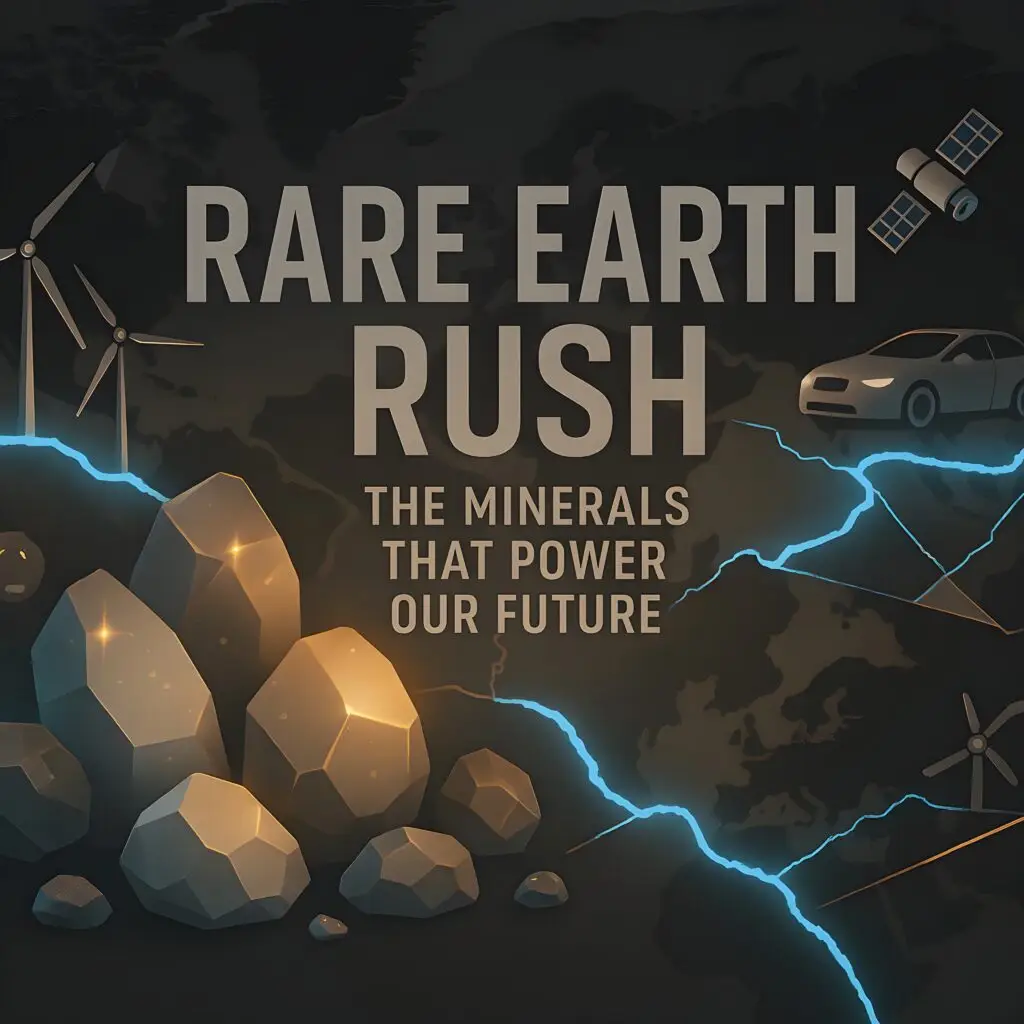Why Rare Earth Minerals Are the New Oil of the 21st Century
Rare earth minerals like neodymium, dysprosium, and praseodymium are essential for magnets, batteries, and electronics. Just as oil fueled global economies in the 20th century, rare earths now drive modern technologies from electric vehicles to wind turbines. Experts predict demand for these critical elements will triple by 2030 as nations pursue clean energy and advanced defense systems.
The Global Power Race- Who Controls the Rare Earth Supply Chain?
Today, China dominates every stage of the rare earth supply chain- mining, processing, and refining. According to The Economic Times, China produces over 60% of the world’s rare earths and refines nearly 85% of global output. This near-monopoly gives Beijing outsized influence over pricing and access, prompting concerns among Western governments .
From Smartphones to Missiles- Why Rare Earths Are Critical to Modern Life
Rare earth elements are woven into countless devices. Tiny amounts of neodymium power high strength magnets in smartphone speakers and computer hard drives. Dysprosium and terbium help electric motors spin at high speeds, while certain oxides improve fiberoptic cables and lasers. On the defense side, rare earth magnets are crucial for precision-guided munitions and radar systems. Without reliable access, both consumer and military supply chains face serious disruptions.
How China Became the Undisputed Leader in Rare Earth Dominance
In the 1980s, China invested heavily in rare earth mining, taking advantage of lower labor costs and looser environmental regulations. Over decades, domestic companies scaled up operations and developed advanced refining techniques that others found hard to match. By 2010, when global prices spiked, China temporarily restricted exports demonstrating its power to shake markets and underscoring the world’s dependence on its rare earth supply.
The West Fights Back- U.S and Allies Scramble to Secure Rare Earth Access
Alarmed by supply vulnerabilities, the U.S, Australia, and the European Union are funding new mines and processing facilities. In 2023, the U.S Department of Energy awarded grants to restart a rare earth mine in California and build separation plants in Texas. Australia’s Lynas Corporation expanded its Malaysian processing site, while the EU launched the European Raw Materials Alliance to coordinate regional sourcing. These efforts aim to diversify supply and reduce reliance on any single country.
Rare Earths vs Semiconductors- The Next Frontier in Geopolitical Warfare
Semiconductors were a flashpoint in past trade disputes; now rare earth minerals have taken center stage. Both are chokepoints in high-tech supply chains. Bloomberg analysts warn that control over rare earths could shape the next era of tech competition, as chips and magnets work hand-in-hand in everything from drones to data centers. Nations that secure both semiconductor fabrication and rare earth processing will hold a strategic edge .
The Hidden Cost of Rare Earth Extraction- Environmental and Ethical Risks
Mining and processing rare earths come with steep environmental prices. Traditional methods use strong acids and generate toxic wastewater, threatening soil and water quality. In China’s Inner Mongolia and Sichuan regions, tailings ponds have contaminated farmland, leading to health problems among local communities. Ethical concerns also arise around labor practices and land rights. Modern mine projects in Australia and the U.S are implementing stricter environmental controls, but community opposition and regulatory hurdles can slow development.
Can the World Break Its Rare Earth Dependency on China?
Diversification is key. Beyond new mines in North America and Australia, researchers are exploring recycling rare earths from electronic waste. Pilot programs in Europe aim to extract these elements from old magnets and circuit boards. Japan has invested in seabed mining technology to harvest deep-ocean minerals. While these solutions show promise, they remain costly and technically challenging. For now, cooperation among governments and private firms is vital to build a more resilient, balanced global rare earth market.
Conclusion
As demand for clean energy, consumer electronics, and defense applications soars, rare earth minerals will remain at the forefront of geopolitical strategy. By understanding supply dynamics, environmental challenges, and emerging alternatives, policymakers and businesses can navigate the rare earth rush—and help ensure the minerals that power our future remain accessible and sustainable.




